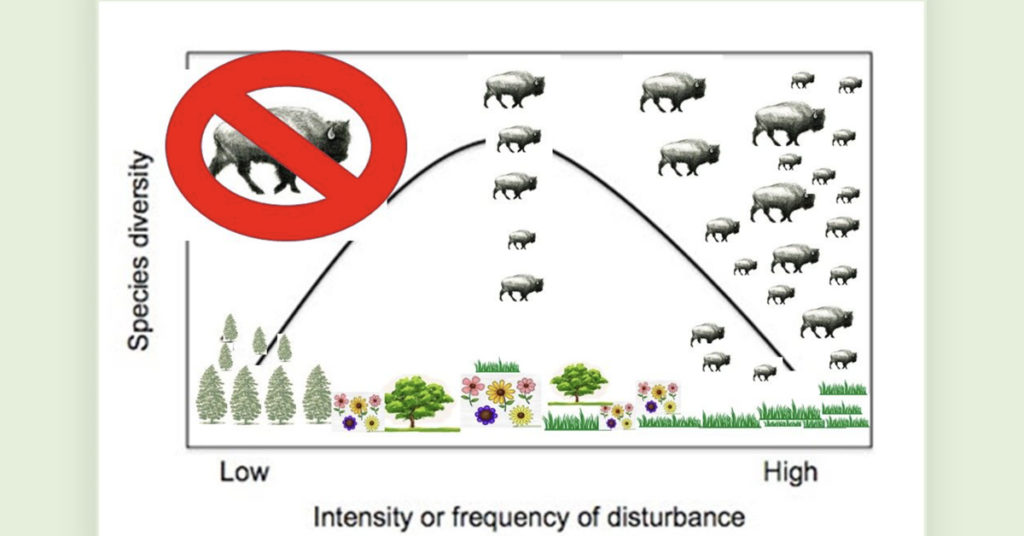
Intermediate Disturbance Hypothesis (IDH) provides restoration ecology a framework for restoring processes that maintain / renew ecological function, biological diversity, and capacity for ecosystem services. In summary, IDH illuminates natural disturbances, such as herbivory and fire, that occurred in predictable cycles, pulses, and patterns, preventing widespread system decent into late succession, as characterized by declines in diversity, function, and loss of natural capital.
In a sense, IDH holds the system “far-from-equilibrium”, the essence of life, and scalable from the mitochondria to the biosphere. The maintenance of all successional seres, from early to late, in non-random patterns, is omnipotent, but at no time should the earliest or latest seres occupy more than 15% of the landscape. In fact, holding the system in any “optimum” configuration is counterintuitive to ecological integrity.
The ultimate goal in restoration is restoring ID processes.
Experiment widely!
*First posted on LinkedIn – Steve Thomforde Restoration Ecologist: Grassland-Savanna-Grazing Ecosystems~ Stantec Consulting & Design International